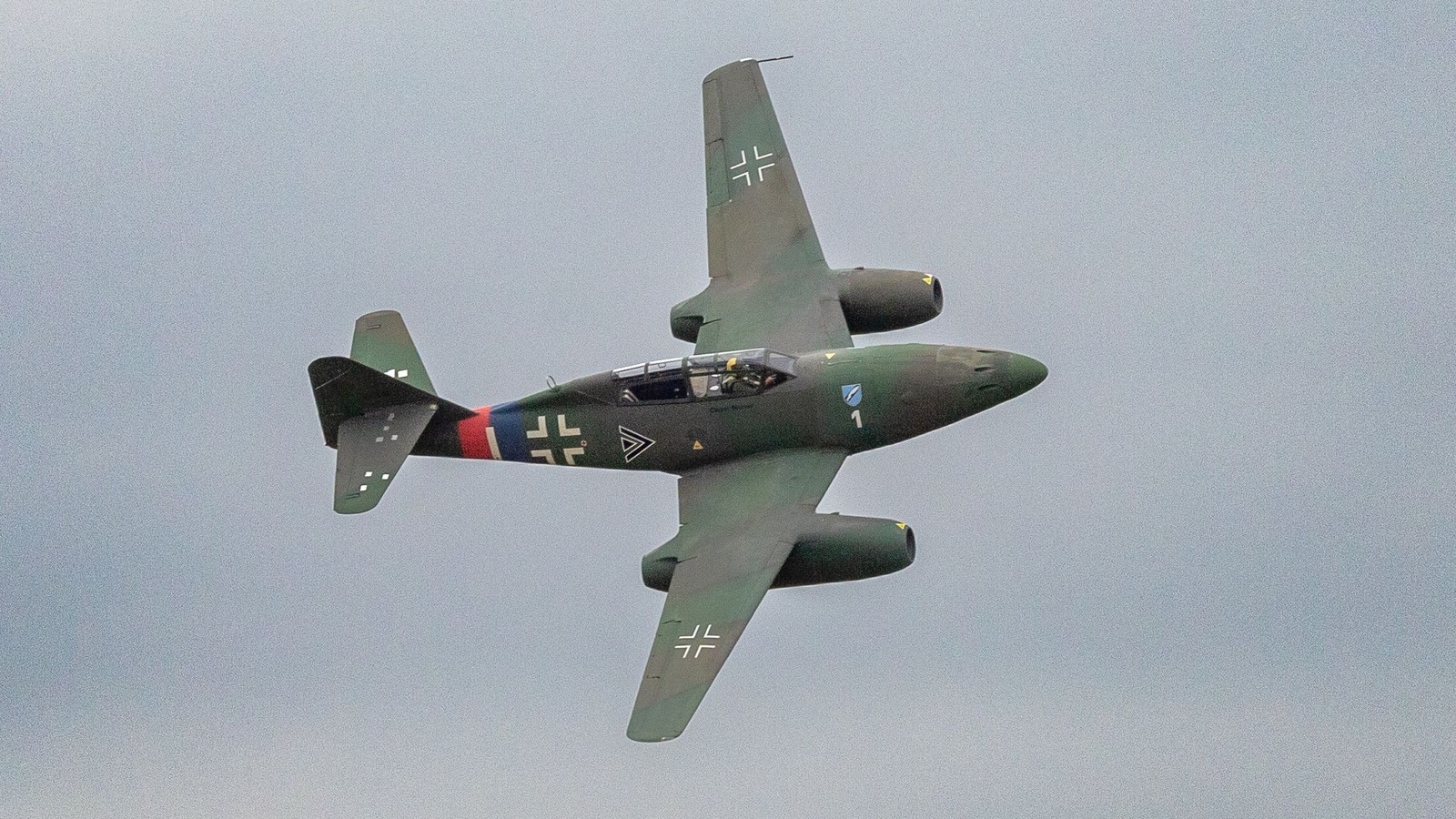
The wings of the Me 262 are angled backward, looking much more modern than those of its rival. Popular Mechanics explains, “By angling the wings of an aircraft toward the rear of the plane, the airflow over the top of the wing is reduced. The plane can then fly faster without generating shockwaves on the wings.” The cockpit is located further back on the 262, directly between the wings, providing a more broad nose at the front. The Swallow variant used two General Electric J-85 engines that were narrower in shape than the engines of the Meteor F.8.
In contrast, the Allied Meteor placed the cockpit ahead of the wings, with a short nose. The Gloster Meteor had more traditional wings of the time, which were larger and rounded at the edges. The F.8 variant featured two Rolls-Royce Derwent 8 jet engines that were wider than the Swallow in design and sat directly in the middle of the wings instead of underneath.
The Me 262 Swallow not only had a shape ideal for speed, but its two J-85 jet engines could generate 2,500 pounds of thrust each. This thrust translated into a top speed of 540 mph, while the Meteor F.8 could manage 598 mph. Although earlier initial versions of the Gloster Meteor weren’t as fast as the Me 262, later versions like the F.8 used much more powerful engines that would’ve theoretically oupaced the Axis jet.

